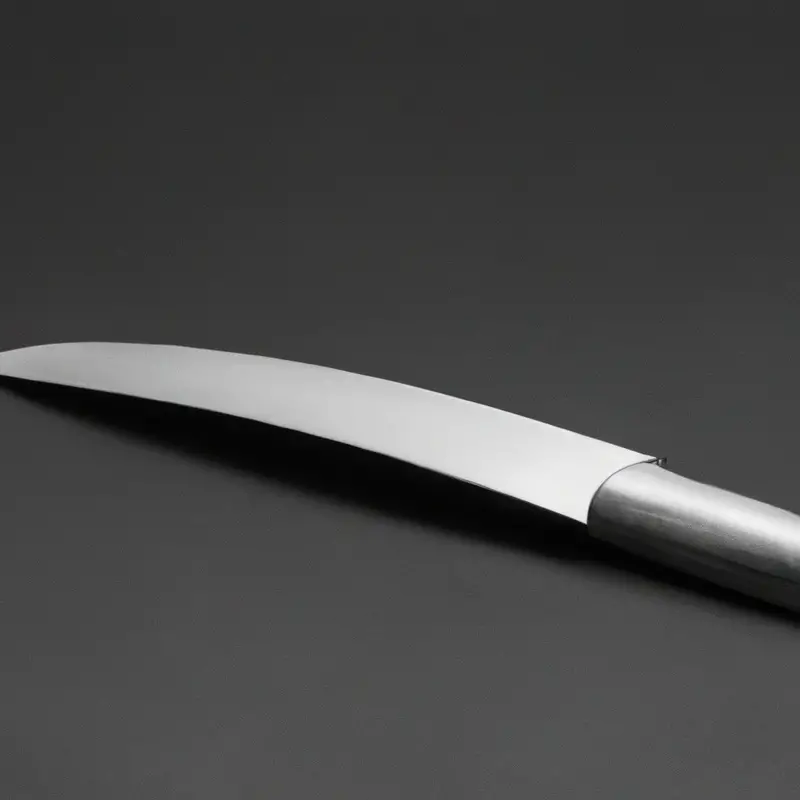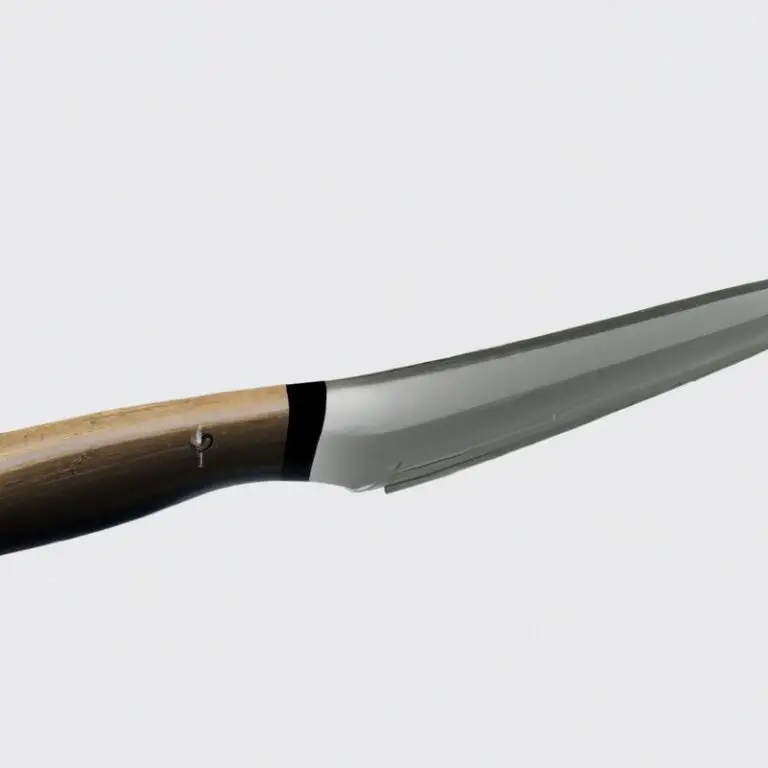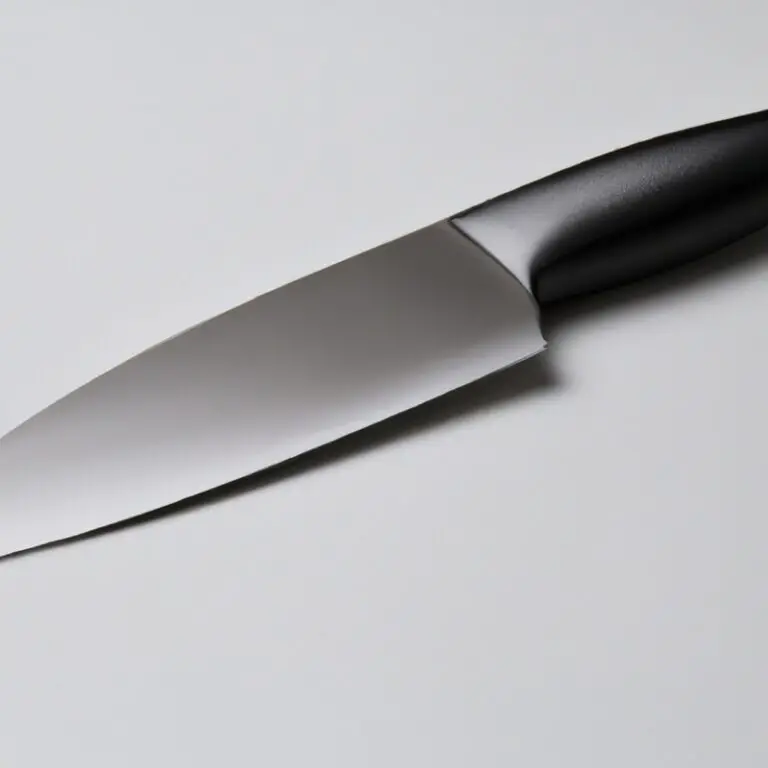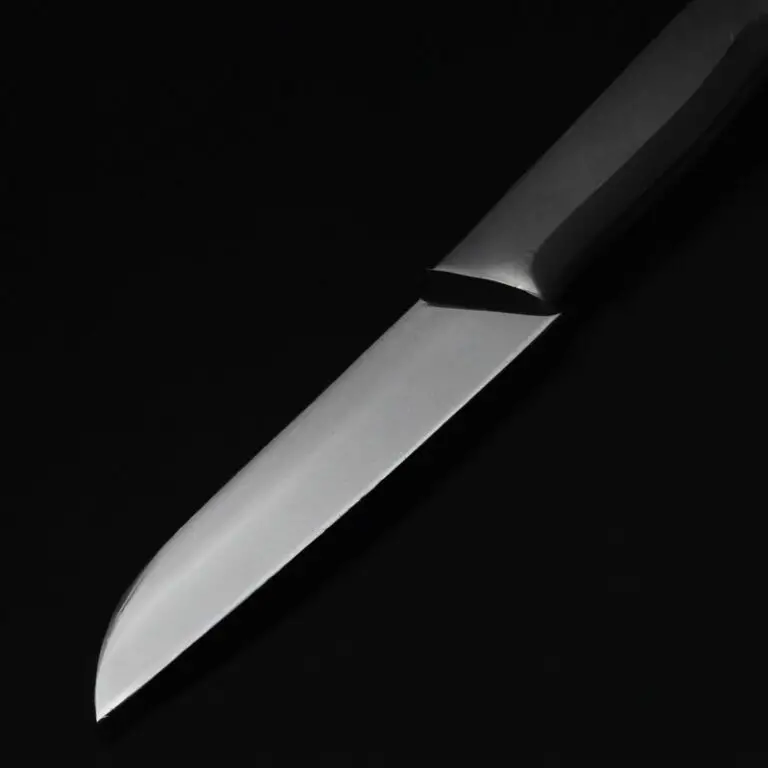How To Slice Avocados With a Santoku Knife? Easy!
Key Takeaways:
- A Santoku knife with a sharp blade is the best tool for slicing avocados efficiently and safely.
- Cut the avocado in half, remove the pit, and make thin slices along the length of the fruit with a gentle back-and-forth motion.
- Use caution and a non-slip surface to avoid injury while slicing avocados with a Santoku knife.
- With practice and patience, even beginners can learn how to slice avocados like a pro with a Santoku knife.
Have you ever struggled to slice an avocado without turning it into a mushy mess? The key to achieving perfect slices lies in the right tool and technique.
That’s where the versatile Santoku knife comes in handy.
As someone who has spent countless hours in the kitchen, I can attest to the importance of using the right knife for the job. In this article, I will give you a step-by-step guide on how to slice avocados with a Santoku knife like a pro.
From mastering the grip and cut to tips on choosing the right avocado, this guide has got you covered.
So, let’s get slicing!
| Steps | Description |
|---|---|
| 1 | Select a ripe avocado and cut it in half lengthwise. |
| 2 | Remove the pit by gently twisting the half with the pit and pulling it out. |
| 3 | Score the flesh of each half of the avocado lengthwise in a crisscross pattern. |
| 4 | Hold the scored avocado half in one hand and gently twist the knife to separate the slices. |
| 5 | Use a spoon to scoop the slices out of the avocado peel. |
Understanding the Santoku Knife: Essential Features and Functions for Slicing Avocado
The Santoku knife is a versatile and efficient cutting tool that originated in Japan. It is primarily designed for slicing, dicing, and mincing, making it perfect for cutting avocados.
The essential features of a Santoku knife include a straight blade with a flat edge, a sharp tip, and a slightly curved blade profile.
The most important function of the Santoku knife is chopping and slicing with the utmost precision. The knife’s blade has a flat edge that makes it ideal for cutting through tough avocado skin without crushing or bruising the fruit’s delicate flesh.
Its sharp tip allows you to separate the avocado flesh from the skin with ease.
Another important feature of the Santoku knife is its handle. It is shorter in length than the traditional Western-style knives, making it easy to control and grip with one hand.
Besides, the handle’s ergonomic design ensures a safe and comfortable grip during repetitive cutting tasks.
Overall, the Santoku knife’s unique features and functions make it an essential tool for slicing avocados with precision and ease. By mastering the grip and cut technique, choosing the right avocado and following the step-by-step guide, you can create perfectly sliced avocado every time.
Hand Placement and Technique: Mastering the Grip and Cut for Perfectly Sliced Avocado
To properly slice an avocado with a Santoku knife, it is crucial to master the hand placement and cutting technique. Begin by cutting the avocado in half, removing the pit, and placing one half on a cutting board, skin-side down.
Hold the avocado firmly with one hand and make lengthwise cuts along the surface, without piercing the skin.
Then, rotate the avocado 90 degrees and make crosswise cuts, creating small squares. Finally, use a spoon to scoop out the diced avocado.
Remember to keep your fingers and other hand out of harm’s way and to use the sharp edge of the Santoku knife for clean cuts.
With practice, you can achieve perfectly sliced avocados every time.
Choosing the Right Avocado: Tips and Tricks for Picking the Best Fruit for Slicing
When it comes to picking the right avocado for slicing, there are a few things to keep in mind. First, look for a ripe avocado with a darker green color and slightly soft to the touch, but not mushy.
Avocados that are too firm may not be ripe enough, while those that are too soft may be overripe and brown inside.
Next, the stem of the avocado can also indicate its ripeness. Gently remove the stem on the top of the fruit – if the stem comes off easily, and the flesh underneath is green, it is likely ripe and ready to be sliced.
If it is brown underneath, the avocado may be overripe.
Finally, consider the variety of avocado – Hass is the most popular type for slicing, known for its creamy texture and rich flavor. However, other varieties such as Bacon or Pinkerton can also make great options for slicing.
With these tips in mind, you can select the best avocado for slicing with your Santoku knife to achieve perfect slices every time.
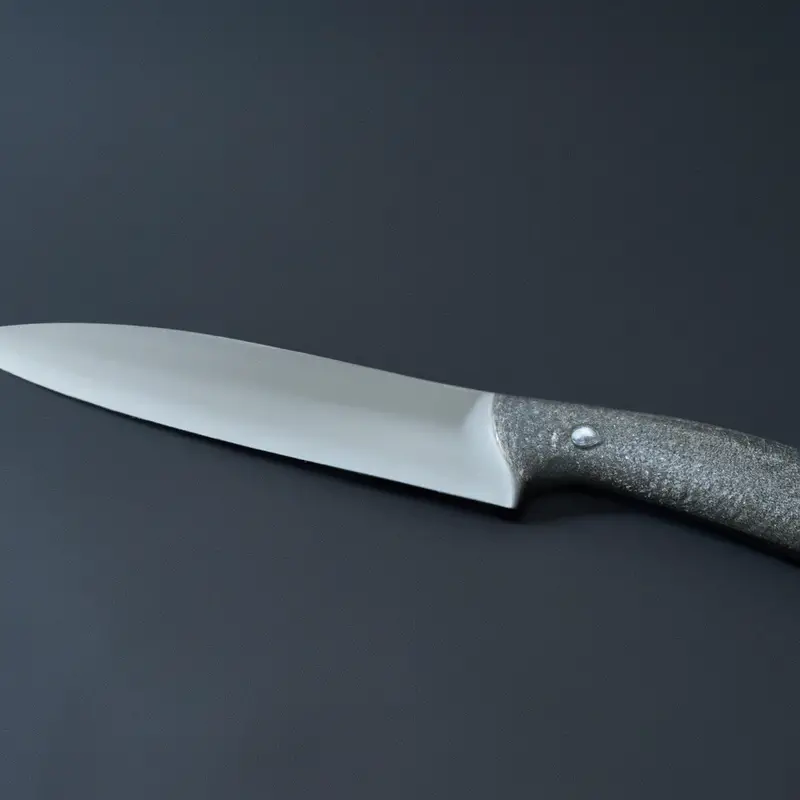
Step-by-Step Guide: How to Slice Avocado with a Santoku Knife
Step-by-Step Guide: How to Slice Avocado with a Santoku Knife
- Cut the avocado in half with a sharp Santoku knife by placing the avocado on a flat surface, making a slit with the tip of the knife into the avocado and rotating it around the seed.
- Twist the avocado halves in opposite directions to separate them.
- Remove the seed by inserting the knife into the seed and twisting it gently until the seed comes out.
- Holding the avocado half with your non-dominant hand, make vertical cuts into the flesh without cutting through the skin.
- Holding the avocado half with both hands, gently twist to separate the slices from the skin.
- Repeat on the other half.
- Use the sliced avocado as desired or store in the refrigerator in an airtight container.
Following these simple steps will ensure perfectly sliced avocados every time. Remember to be mindful of your grip on the knife and always prioritize safety measures to avoid accidents.
Safety First: Precautions to Take When Handling a Sharp Santoku Knife
When using a sharp Santoku knife to slice an avocado, safety should always be your first priority. Here are some key precautions to take:
- Always keep your knife sharp. A dull knife is more likely to slip and cause an injury.
- Use a cutting board with a non-slip surface to prevent the knife from slipping.
- Keep your fingers away from the blade at all times. Use a claw-like grip with your fingers curled under to hold the avocado securely and away from the blade.
- Cut away from your body, not towards it.
- Make sure your knife is dry before using it to slice an avocado.
- Never leave your knife unattended on a countertop or in a sink. Always store it in a safe place, such as a knife block or drawer.
By following these simple precautions, you can ensure a safe and successful experience when slicing avocados with a sharp Santoku knife.
Tips for Storing and Preserving Sliced Avocado: Keeping it Fresh for Longer
To keep sliced avocado fresh for longer, there are a few tips to keep in mind. First, store the sliced avocado in an airtight container or wrap it tightly in plastic wrap.
This will prevent air from reaching the avocado, which can cause it to turn brown.
Second, add a squeeze of lemon or lime juice to the avocado before storing it. The acidity in the citrus juice will help prevent browning.
Lastly, store the sliced avocado in the refrigerator and consume it within 2-3 days for the best quality.
Avoid storing the sliced avocado at room temperature, as this can accelerate the oxidation process and cause it to spoil more quickly. By following these tips, you can extend the shelf life of sliced avocado and enjoy it for longer.
Common Mistakes to Avoid When Slicing Avocado with a Santoku Knife
Common Mistakes to Avoid When Slicing Avocado with a Santoku Knife:
- Using a dull knife – A blunt knife can damage the fruit and cause it to turn brown quickly. Always use a sharp Santoku knife.
- Not removing the seed properly – Cutting the avocado from around the seed and attempting to remove it can result in injury. Cut the avocado in half and twist it to remove the seed.
- Using too much pressure – Applying too much pressure while cutting can lead to bruising and uneven slices.
- Slicing too thin or too thick – Slicing too thinly or too thickly can affect the texture and appearance of the fruit. Aim for medium thickness.
- Holding the avocado with bare hands – It can be dangerous and cause the knife to slip. Always use a kitchen towel to hold the avocado.
Avoiding these mistakes will help you achieve perfectly sliced avocados with your Santoku knife.
Adding Flair to your Sliced Avocado: Creative Slicing Techniques to Impress Your Guests
Simply slicing an avocado can be boring – why not add flair and impress your guests? Here are some creative slicing techniques that are sure to elevate your avocado game:
- Thinly slice the avocado lengthwise, fanning it out on a plate for an elegant presentation.
- Cut the avocado into cubes for a unique twist on traditional guacamole.
- Cut the avocado into thin, long strips for a beautiful addition to any salad.
- Create avocado roses by thinly slicing the avocado and rolling it into a beautiful flower shape.
Remember, presentation is key when it comes to impressing guests. With these creative slicing techniques, you can take your avocado dishes to the next level.
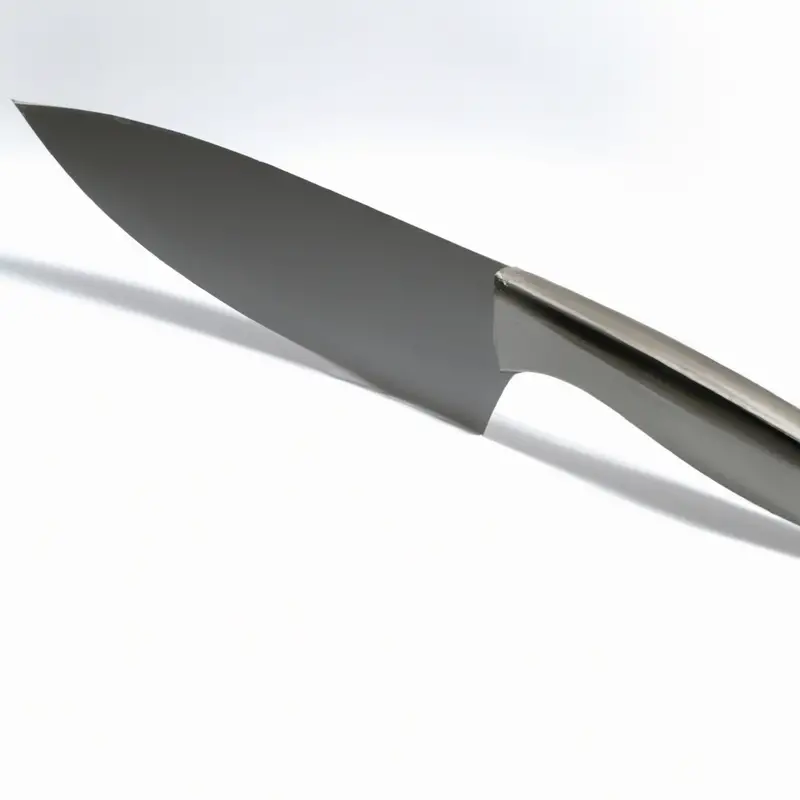
Understanding and Utilizing the Versatility of a Santoku Knife for Other Foods
The Santoku knife is not only useful for slicing avocados but also suitable for other types of food. It has a versatile design that enables it to handle various ingredients, from meats to vegetables.
Its short blade length makes it easy to maneuver and cut through food efficiently.
The flat edge of the knife allows for precise chopping and slicing, while the Granton edge decreases friction and prevents food from sticking to the blade. This makes it the perfect tool for tasks such as mincing herbs, slicing tomatoes, and dicing onions.
The Santoku knife’s unique design and features make it a necessary tool for any kitchen.
Routine Maintenance for Your Santoku Knife: Keeping it Clean and Sharp for Optimal Performance
To ensure your Santoku knife retains its optimal performance, it’s crucial to keep it clean and sharp through routine maintenance. Here are some tips to help you maintain your Santoku knife:
- Clean your knife with mild soap and water after each use. Avoid using abrasive sponges or harsh detergents as they can damage the blade.
- Dry your knife thoroughly after cleaning it to prevent rust or corrosion. Store it in a dry place to prevent moisture buildup.
- Sharpen your Santoku knife regularly to maintain its sharpness. Consider using a honing steel or whetstone for sharpening.
- Use a cutting board made of soft material like wood, bamboo, or plastic. Hard surfaces like granite or marble can dull your knife quickly.
- Avoid using your knife on hard surfaces like bones, frozen foods, or glass, as these can cause nicks or chips in the blade.
By following these simple maintenance tips, you can extend the lifespan of your Santoku knife and ensure it continues to perform optimally.
Final Verdict
Mastering the art of slicing avocados with a Santoku knife is a valuable skill that any home cook should possess. By understanding the essential features of the knife, mastering proper hand placement and technique, selecting the right avocado, and following safety precautions, anyone can achieve perfectly sliced avocados.
It is also important to store and preserve sliced avocado properly to keep it fresh for longer.
Avoiding common mistakes and adding creative flair to your slices will impress your guests and elevate any dish. Additionally, understanding the versatility of the Santoku knife for other foods is a bonus.
Lastly, maintaining the Santoku knife regularly will ensure optimal performance.
With these tips and tricks, you’ll be dishing out perfectly sliced avocados like a pro. Trust in the credibility of this information and start slicing with confidence.

